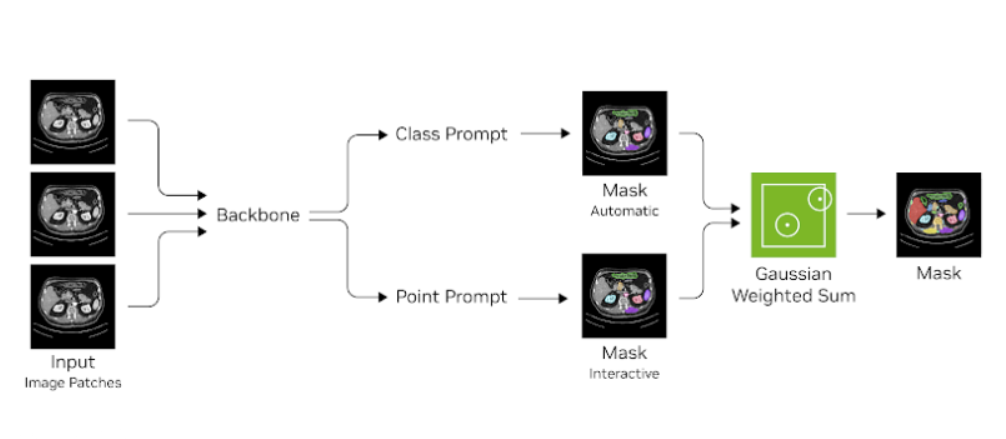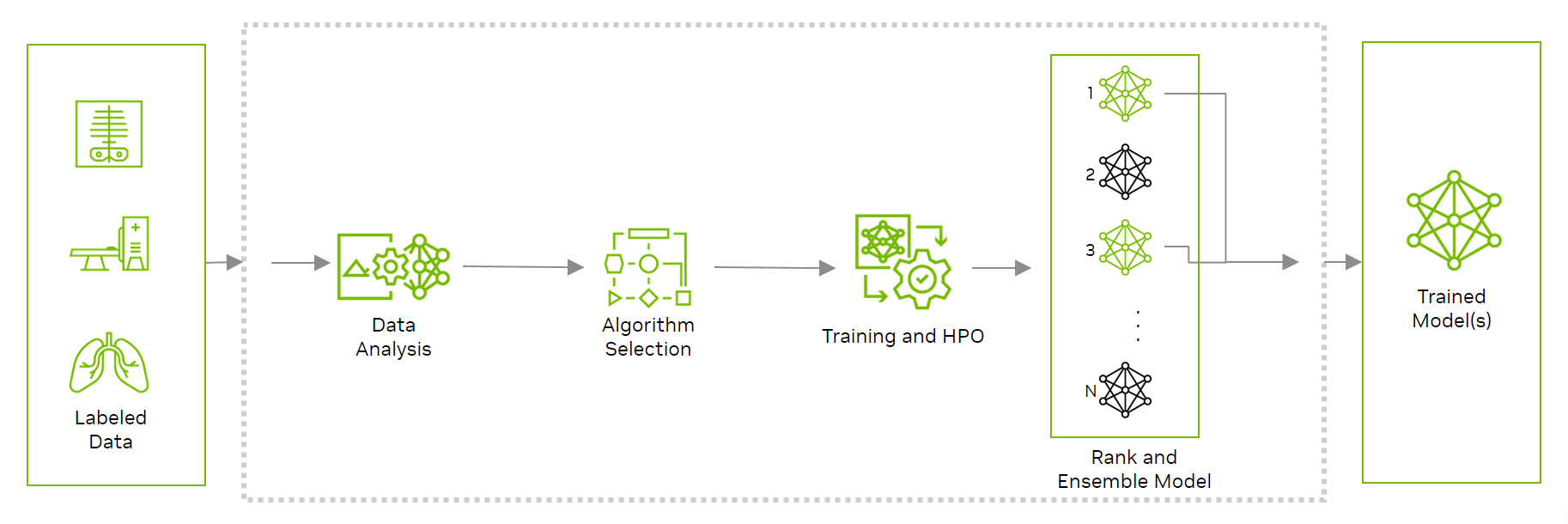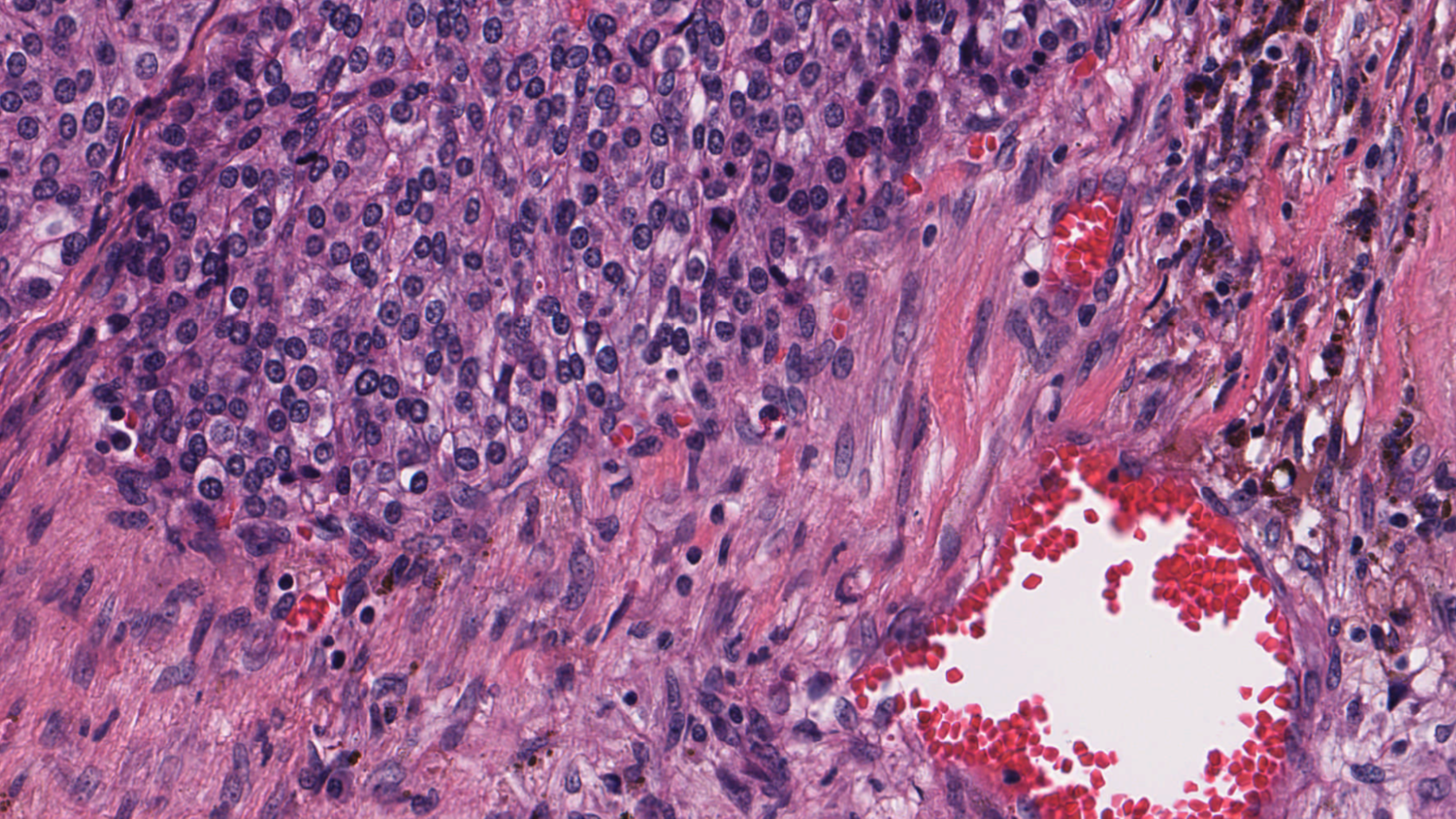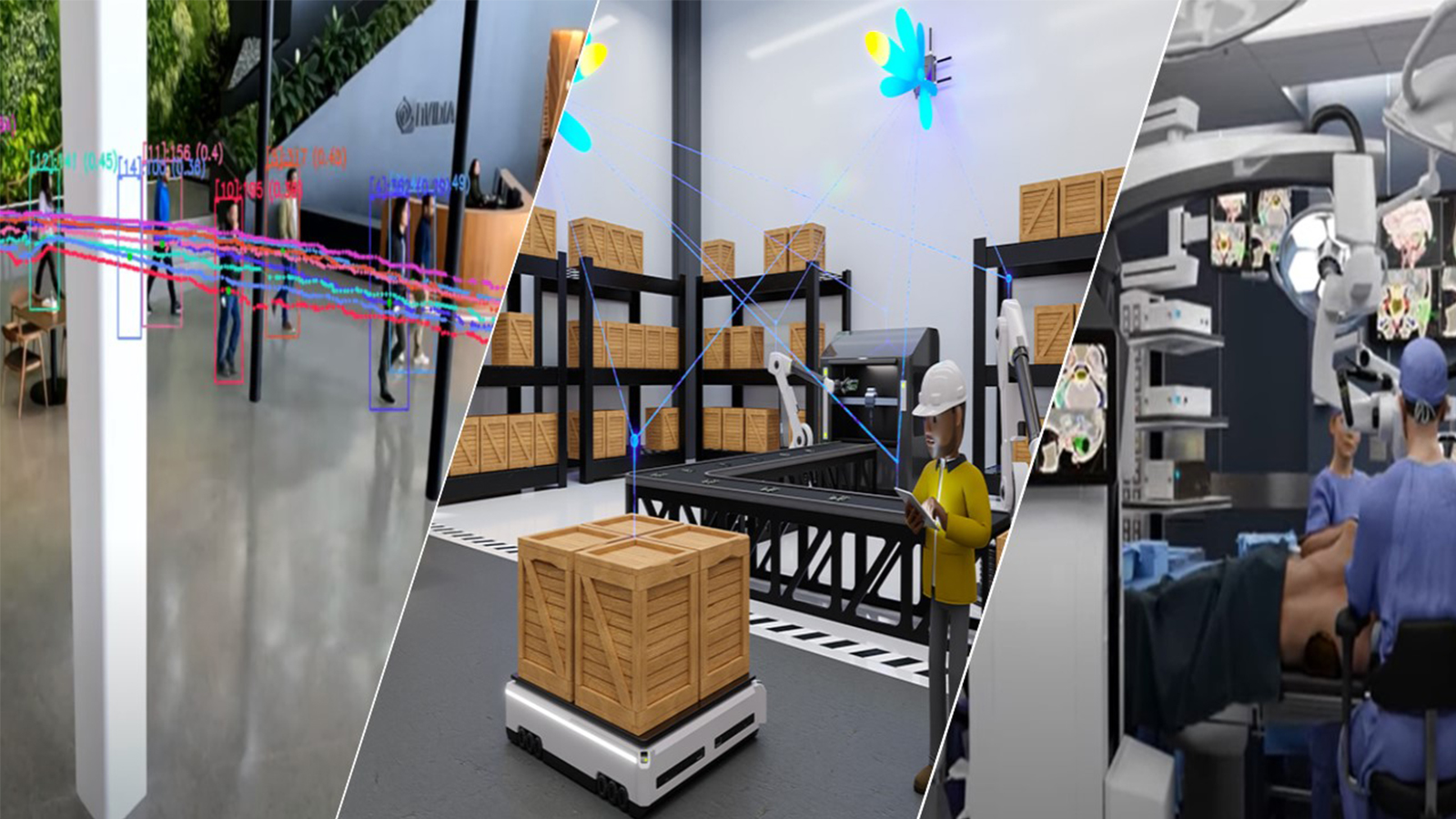AI is increasingly being used to improve medical imaging for health screenings and risk assessments. Medical image segmentation, for example, provides vital data for tumor detection and treatment planning. And yet the unique and varied nature of medical images makes achieving consistent and reliable results challenging.
NVIDIA MONAI Cloud APIs help solve these challenges, simplifying the journey of AI capabilities and infrastructure setup for platform integrators. This post introduces NVIDIA MONAI Cloud APIs, VISTA-3D, and Auto3DSeg and explains how to use them together to achieve adaptable 3D medical imaging.
NVIDIA MONAI Cloud APIs offer low-latency, interactive, and cost-effective AI-assisted annotation workflows. With the continual learning mechanism, the model adapts to new real-world data, enabling it to maintain its relevance and robustness over time.
Interactive annotation with VISTA-3D
Trained on vast datasets, VISTA-3D is a specialized interactive foundational model for 3D medical imaging. Powering NVIDIA MONAI Cloud API interactive annotation, VISTA-3D provides accurate and adaptable segmentation analysis across anatomies and modalities. It handles a variety of tasks and adapts to different conditions and anatomical areas. This versatility reduces costs and expedites AI imaging workflows without the intricate complexities of model selection and adaptation.
In the realm of medical imaging annotation, VISTA-3D represents a transformative approach. By blending semantic segmentation and interactivity, it bridges the gap between AI and human experts (bioimaging scientists and radiologists, for example). VISTA-3D offers these professionals an evolving AI model that ensures both high accuracy and ease of use.
Core to VISTA-3D are three adaptable, user-friendly workflows:
- Segment everything: Entire image exploration useful for understanding diseases impacting multiple organs or for holistic treatment planning.
- Segment using class: Detailed section views selectable by specific classes for targeted analysis of certain diseases or organs; valuable for mapping tumors in organs.
- Segment point prompts: User feedback-guided image segmentation, through click-based selection of interest areas, for improved accuracy and faster creation of ground-truth data.
VISTA-3D architecture boasts an impressive mean dice score of about 0.91, thanks to its blend of interactive and automatic systems. This foundational flexibility enables users to quickly tailor the model for their tasks.

AI model training with Auto3DSeg
Built on the foundations of MONAI and powered by cutting-edge GPUs, Auto3DSeg provides developers with the tools for achieving top-tier 3D medical image segmentation. The computational efficiency of Auto3DSeg is optimized to ensure rapid training while extracting the most from GPU computational capabilities.
Auto3DSeg uses MONAI components to achieve state-of-the-art segmentation performance. A MONAI Bundle offers a more customized solution. A MONAI Bundle defines a packaged network or model that includes the information necessary for users and programs to understand how the model is used and for what purpose. Bring your own MONAI Bundle to training and take full advantage of the robust, scalable training infrastructure.
Once you have your annotated data, use either custom model training or Auto3DSeg for an optimized model development experience.
Training is all about flexibility—bring your unique MONAI Bundle, and watch as your training scales effortlessly on the NVIDIA MONAI Cloud API platform.
If automation is your goal, Auto3DSeg is your answer. Designed with developers in mind, Auto3DSeg stands out with its innovative features:
- Data-driven model selection: Auto3DSeg delivers intelligent automation. By analyzing annotated imaging datasets, Auto3DSeg can automatically select and scale the most appropriate model architectures. This ensures optimized performance tailored specifically to your data.
- Streamlined development cycle: The development cycle is significantly streamlined with Auto3DSeg. It reduces complexity by incorporating automated parallel training and hyperparameter optimization. This expedites the entire process, from dataset analysis to creating deployment-ready models, saving time and resources.
- Proven state-of-the-art segmentation performance: Auto3DSeg has secured multiple top positions at MICCAI in various segmentation challenges, notably the BraTS 2023, KiTS 2023, SEG.A. 2023 and MVSEG 2023 competitions.

Summary
Platform integrators striving for innovation in medical imaging can fully harness the capabilities of NVIDIA MONAI Cloud APIs, expediting the development of their AI models for medical imaging. This approach reduces operational overhead and grants immediate access to accelerated computing and AI capabilities in a streamlined manner.
To explore VISTA-3D, custom model training, and Auto3DSeg, sign up for the early access program. To try VISTA-3D, visit NVIDIA AI Foundation Models starting November 27.









